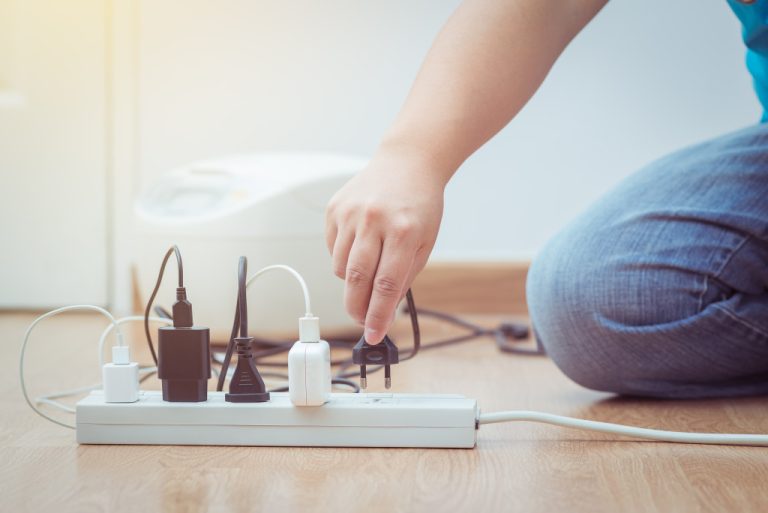With technology becoming an increasingly important part of our lives, it is more important than ever to find sustainable ways to use it. Here are some tips for using technology more sustainably.
How to Use Technology Sustainably in Daily Life
1. Do not upgrade your gadget because the latest model is out.
Use your gadget until its end of life. If it gets damaged but is still repairable, get it repaired. For instance, you can get an Apple iPad screen repair done by a reliable online service provider within two to four days with a service warranty. Using your gadgets for as long as possible reduces the need to manufacture new ones and reduces waste.
2. Bring your own device (BYOD) instead of using company-provided devices whenever possible.
The company does not have to buy new devices by bringing your own device. That reduces the need to manufacture new devices and also reduces waste.
3. Go off-grid.
Go off the grid for as many things as possible by installing solar power, wind power, or a geothermal heating/cooling system.
4. Put chargers away after each use and do not charge them overnight when possible.
Charging devices at night adds up significantly over time. Many people leave their phones charging until they wake up in the morning. They do not realize that those few extra minutes can add 90 minutes of additional charging time. That is 90 minutes of unnecessary use of electricity.
5. Use a laptop or desktop computer rather than a tablet.
Tablets use more power than laptops and tend to have shorter lifespans. If you plan to use your device for more than two years, it is better to get a laptop.
6. Print only when necessary and use both sides of the paper when printing.
Reducing the amount of paper you use will save trees and reduce pollution from manufacturing new paper.
7. Always recycle used technology devices and their batteries responsibly according to local regulations.
Do not throw gadgets and batteries in the trash. Proper recycling of technology devices helps to ensure that toxic materials do not end up in landfills where they can leach into the ground and contaminate water supplies.
8. Buy certified sustainable technology when possible.
The best way to reduce your impact is to buy certified sustainable technology devices. This includes gadgets that are made with recycled materials and are designed to be recycled again at the end of their lifespans.
9. Educate yourself and others about the importance of using technology sustainably.
Share this article with your friends and family to help spread the word about sustainable technology use.

10. Advocate for sustainable technology policies in your community.
There are many things that communities can do to encourage sustainable technology use. One way is to offer incentives for people who reduce their energy consumption. Another way is to create laws and regulations that mandate the use of sustainable technology practices. Join petitions sent to your local government officials.
11. Purchase carbon offsets to balance out your emissions from using technology.
If you want to offset your emissions, you can purchase carbon offsets. These are investments in green projects that help to reduce emissions elsewhere. For example, you could purchase offsets that go towards planting trees or investing in renewable energy projects.
12. Avoid using disposable electronics whenever possible.
Disposable electronics, such as single-use cameras, are made with harmful materials and are difficult to recycle. If you can, avoid using them altogether.
13. Use rechargeable batteries rather than disposable batteries.
Rechargeable batteries are made with fewer harmful materials and can be reused many times. They are a much more sustainable option than disposable batteries.
14. Unplug devices when they are not in use.
Leaving gadgets plugged in when they are not in use wastes energy and shortens the lifespan of the device. Make sure to unplug devices when you are finished using them.
15. Turn off power strips when not in use.
Just like with devices, leaving power strips turned on wastes energy and shorten the lifespan of the strip. Make sure to turn off power strips when you are finished using them.
16. Get a home energy audit to see where you can improve your energy efficiency.
Home energy audits are a great way to see how much energy you are using on what devices. You can track how much electricity you are consuming in your home monthly and compare it with your peers or international averages. That can help you identify where you can save energy. You can then find ways to reduce your energy consumption and lower your utility bills.
17. Purchase recycled or refurbished electronics when possible.
Recycled and refurbished electronics are a more sustainable option than buying new gadgets. They often use fewer resources and create less waste.
18. Donate used electronics to charity or someone who could use them.
Donating used electronics is a great way to keep them out of the landfill. It also gives someone who may not be able to afford a new device the chance to have one. Make sure to wipe all of your personal data off of the device before you donate it.
Use Technology Responsibly
By following these tips, you can help to make sure that you are using technology sustainably. Remember to always dispose of your electronics responsibly, unplug devices when they are not in use, and advocate for sustainable technology policies in your community. With a little effort, you can use technology sustainably.

